For the past 60 years, The Pennsylvania Sports Hall of Fame has honored and inducted over 780 incredible men and women who have made a lasting impact in Pennsylvania through extraordinary athletic achievement and contributions. Whether these activities have been achieved on or off the field, we honor them. Through our future virtual museum, we educate and celebrate their achievements for years to come.
The Pennsylvania Sports Hall of Fame’s 2025 Induction Ceremony and Dinner is Saturday, October 18, 2025 at 6:00 pm at the Sheraton Station Square Hotel.
Glenn S. "Pop" Warner
Deceased
Year Inducted:1966

-
One of the most successful coaches in college football history and a member of the College Football Hall of Fame, Glenn "Pop" Warner received his start at the University of Georgia then went to Cornell to coach in 1897 then two years later to the Carlisle Indian School in Carlisle, Pa. In five years, he transformed the school into a national power, amassing a record of 11-2-1 in 1903. After spending three more years at Cornell, he returned to Carlisle in 1907. His return coincided with the arrival of Jim Thorpe, generally considered the greatest athlete of the first half of the twentieth century. In 1915, lured by a higher salary and better facilities, he took over the University of Pittsburgh program, remaining through the 1923 season. Four of his teams went undefeated. In 1924 he moved to Stanford University in Stanford, California, where he coached the team to three Rose Bowl Championships and went undefeated in 1926. Warner finished his career at Temple University in Philadelphia where he coached from 1933 to 1938. After winning just Three of ten games in 1938, Warner was forced to retire, finishing with an overall record of 319-106-32. During Warner's forty-four years as a head coach he introduced many innovations to the game: including the spiral punt; naked bootleg; double reverse; three -point stance; screen pass; single-and double-wing formations; the numbering of player’s jerseys; the employment of shoulder pads, thigh pads, lightweight uniforms, and safer helmets; and the use of blocking sleds and tackling dummies at practice.
Robert "Bob" Allman
Deceased
Year Inducted:1966

-
Bob lost his eyesight at the age of four as the result of an accident. He attended the
Overbrook School for the Blind in Philadelphia where his academic and athletic
achievements won him a scholarship to the University of Pennsylvania. He won the the
Middle Atlantic A. A. U. Championship, Finalist in the Eastern Intercollegiate Championships
for three years. Elected captain of the University Wrestling team, and was awarded the Phi
Beta Kappa key for academic achievement.
Lester R. Bell
Deceased
Year Inducted:1966
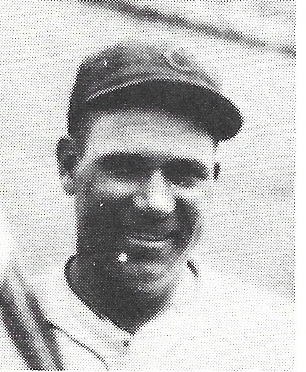
-
Lester started his baseball career in 1922 in Lansing, Michigan. In 1934 he started with the Houston Texans and was brought up to the St. Louis Cardinals. In 1924, he started with the Cardinals but was shipped out later to the Milwaukee team in the American Association. In 1925-’26-’27 he was with The Cardinals and was on the team that beat the New York Yankees four games to three in the 1926 World Series. His baseball journey continued as he was traded to Boston Braves in 1928 and spent 1930 and’31 with the Chicago Cubs. His lifetime batting average was .290.
William "Billy" Conn
Deceased
Year Inducted:1966
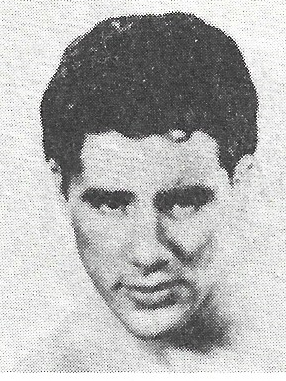
-
In the Heavyweight championship fight for the Title in 1941 Conn, a light-heavyweight, was far ahead of Heavyweight Champion Joe Lewis before being knocked out in the 13th round.
James "Jim" Daniell
Deceased
Year Inducted:1966
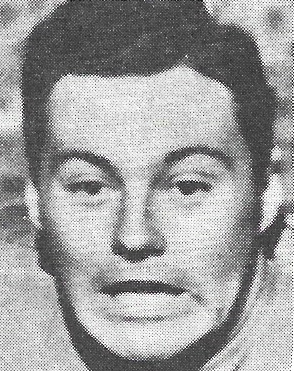
-
Educated in the Mount Lebanon Public Schools, Kiski Prep School and Ohio State University in 1942. Was the captain of his high school team in 1935, Kiski Prep team in 1937 and Ohio State in 1939,’40.’41. He was named to several All-American Teams, and played in the East-West Shrine Game in 1942. Going in to the Navy, he played for Navy training station team in 1942.
After the service, he joined the Chicago Bears in 1945 and was captain of the first Cleveland Brown team in 1946.
Thomas "Tommy" Davies
Deceased
Year Inducted:1966
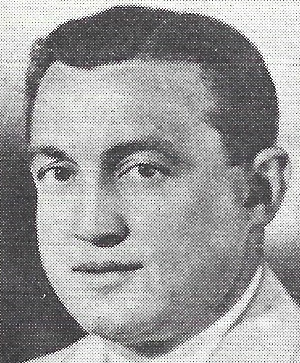
-
Tommy was an All-American at the University of Pittsburgh in 1918,’20 and ’21 gaining 4,620 yards. Assistant coached at the University of Pennsylvania. Head Coach at Geneva, Allegheny, Rochester University, Scranton University, and Western Reserve.
Charles "Charley" Gelbert
Deceased
Year Inducted:1966

-
A native of Amber, Pennsylvania was one of the greatest all-around three letter in Lebanon Valley College history. Considered one of the games best shortstops with the St Louis Cardinals in in the early thirties. A gunshot accident, nearly lost a leg, interrupted his season but he returned to help the Cardinals win the World Series. Name the Most Courageous Athlete by Philadelphia Sports Writers. Long time baseball coach at Lafayette College.
Edward "Eddie" Gottlieb
Deceased
Year Inducted:1966

-
Known as Mr. Professional Basketball in Pennsylvania Eddie is responsible for building the game of basketball
to the heights that it has reached today. Former owner-coach of the Philadelphia Warriors and has played a part in the development of the game for over 50 years.
Henry Hinky Haines
Deceased
Year Inducted:1966

-
A graduate of Red Lion High School playing basketball, baseball and track. No football at Red Lion at the time. Played football. basketball. baseball and track for two years at Lebanon Valley College and played football, basketball, and baseball for two years at Penn State.
Walter Camp All-American in football and two-time All-American in baseball. Signed with the Yankees
after graduation and played on the 1923 World Series team. Was an assistant football coach with several
teams and signed with the New York Giants in 1925.
Thomas "Tommy" Loughran
Deceased
Year Inducted:1966

-
Tommy fought a dozen champions in various classes And held the Light Heavyweight Title from 1927 until
1929. Considered by many as a truly great champion.
George Munger
Deceased
Year Inducted:1966

-
Coached the University of Pennsylvania to seven Ivy League Football Championships from 1938 Until he retired in 1953. Considered one of the great leaders of young men.
Robin Roberts
Deceased
Year Inducted:1966

-
Robin was the winner of 286 Major League baseball Games in a career that started with the Philadelphia
Phillies. Greatly responsible for the “Whiz Kids” team In 1050. He was sold to the Yankees, then to Houston and Chicago Cubs.
Art J. "Art" Rooney
Deceased
Year Inducted:1966

-
Art is the owner and President of the Pittsburgh Steelers. He Is considered one of the pioneers of professional football. Art was an outstanding athlete; playing football at Indiana and Duquesne University, minor league baseball player as owner-manager at Wheeling West Virginia. He was also considered
an excellent boxer.
Dr. John Bain "Jock" Sutherland
Deceased
Year Inducted:1966
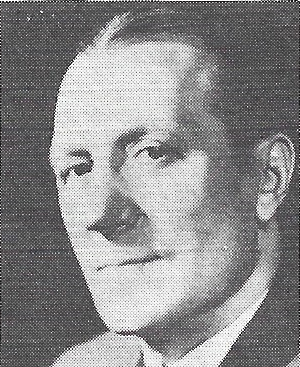
-
Former pupil of Pop Warner began his career as a Head Coach at Lafayette College and then going to the University of Pittsburgh where h coached his team to national prominence.
John "Long John" Woodruff
Deceased
Year Inducted:1966
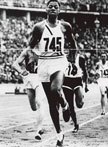
-
John Woodruff, a former track standout at Connellsville High School, blazed into the record books with his Gold Medal victory in the 800 meters at the 1936 Summer Olympics in Berlin.
In his high school days, Woodruff had wanted to play football, but his mother felt the practices took up too much of his time, so he was encouraged by a coach to join the track team.
Meanwhile, Woodruff had decided to quit school.
As he recalled, “This was Depression times and there was very little money in our house, so I figured if I could find some kind of job I could earn a little bit of money and help out at home. I quit school, but when I went looking for work, nobody was hiring. I was turned down everywhere. So I decided to go back to school.”
In spring, when it came time for track to begin, Coach Joseph “Pop” Larew approached Woodruff about trying the sport. His mother agreed, since he would be getting home earlier than he had in football and could get his chores done.
The first time he ever ran in scholastic competition, Woodruff won both the 880-yard and mile runs and, before he graduated in 1935, he owned new school, Fayette County, district and state records, plus, in 1935, he broke the national school mile record with a 4:23.4 winning time.
His athletic ability caught the attention of local schools and Pitt and Ohio State were at the top of his list.
“I was interested in Ohio State because Jesse Owens was there, but there were some business people in Connellsville who were also Pitt men and they got me a scholarship to Pitt. If it wasn't for that scholarship, I couldn't have made it. I was the only one from my family to go to college.”
Times were tough and Woodruff struggled to get by in college.
“I reported to Pitt with 25 cents in my pocket. Some people in Pittsburgh helped me get a room at the YMCA in the Hill District and I had to fight the bedbugs for sleeping space. Pitt track coach Carl Olson gave me $5 and since hamburgers were a nickel and hot beef sandwiches were 20 cents, I made that do a week.”
Woodruff was only a freshman at the University of Pittsburgh in 1936 when he placed second at the National AAU meet and first at the Olympic Trials, earning a spot on the U.S. Olympic team. In one of the most exciting races in Olympic history, Woodruff became boxed in by other runners and was forced to stop running. He then came from behind to win in 1:52.9. The New York Times described the race:
He remembered the anguish of his Olympic race: “Phil Edwards, the Canadian doctor, set the pace, and it was very slow. On the first lap, I was on the inside, and I was trapped. I knew that the rules of running said if I tried to break out of a trap and fouled someone, I would be disqualified. At that point, I didn’t think I could win, but I had to do something.”
Woodruff was a 21-year-old college freshman, an unsophisticated and, at 6-foot-3, an ungainly runner. But he was a fast thinker, and he made a quick decision.
“I didn’t panic,” he said. “I just figured if I had only one opportunity to win, this was it. I’ve heard people say that I slowed down or almost stopped. I didn’t almost stop. I stopped, and everyone else ran around me.”
Then, with his stride of almost 10 feet (3.0 m), Woodruff ran around everyone else. He took the lead, lost it on the backstretch, but regained it on the final turn and won the gold medal.
It was another gold medal for the United States’ so-called Black Auxiliaries — the Nazis’ term for the black athletes — and another thorn in the side of Adolf Hitler, who greeted every white winner, but none of the blacks.
Every winner in the 1936 Olympics received an oak tree from the Black Forest of Germany, presented by the German government. John brought his home, and presented it to the city of Connellsville. It was planted at the south end of the city football stadium, where today it still stands more than 60 feet straight and tall.
During a career that was curtailed by World War II, Woodruff won one AAU (Amateur Athletic Union) title in the 800 meters in 1937 and won both the 440-yard (400 meter) and 880-yard (800 meter) IC4A titles from 1937 to 1939. Woodruff also held a share of the world 4x880-yard (800 meter) relay record while competing with the national team.
Woodruff graduated in 1939, with a major in sociology, and then earned a Masters Degree in the same field from New York University in 1941. He entered military service in 1941 as a Second Lieutenant and was discharged as a Captain in 1945. He reentered military service during the Korean War, and left in 1957 as a Lieutenant Colonel. He was the battalion commander of the 369th Artillery, later the 569 Transportation Battalion New York Army National Guard.
Woodruff also worked as a teacher in New York City, a special investigator for the New York Department of Welfare, a recreation center director for the New York City Police Athletic League, a parole officer for the state of New York, a salesperson for Schieffelin and Co. and an assistant to the Center Director for Edison Job Corps Center in New Jersey.
He passed away on October 30, 2007 at the age of 92.
Return to Inductee at a Glance main page.